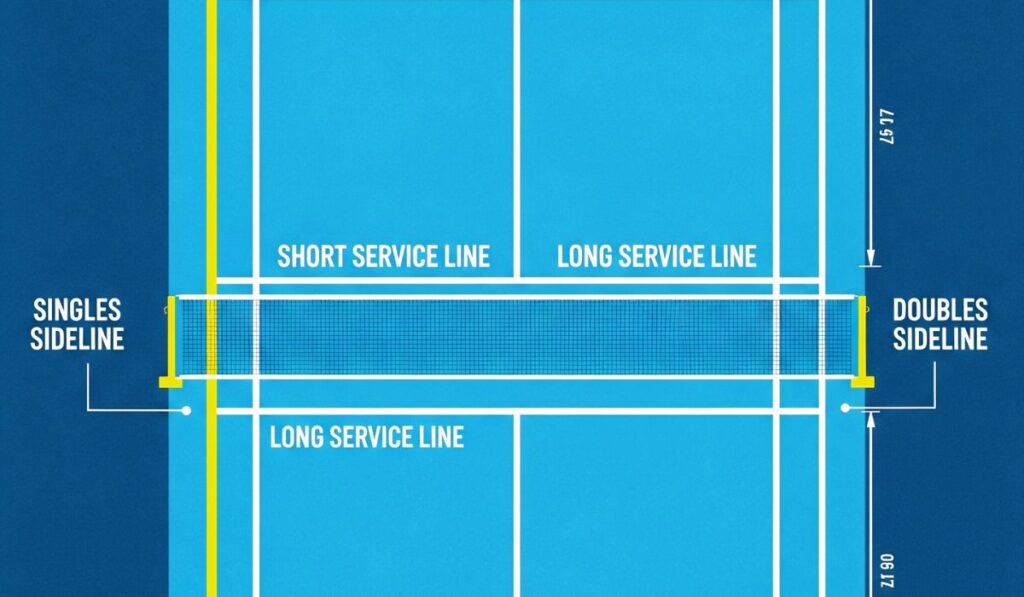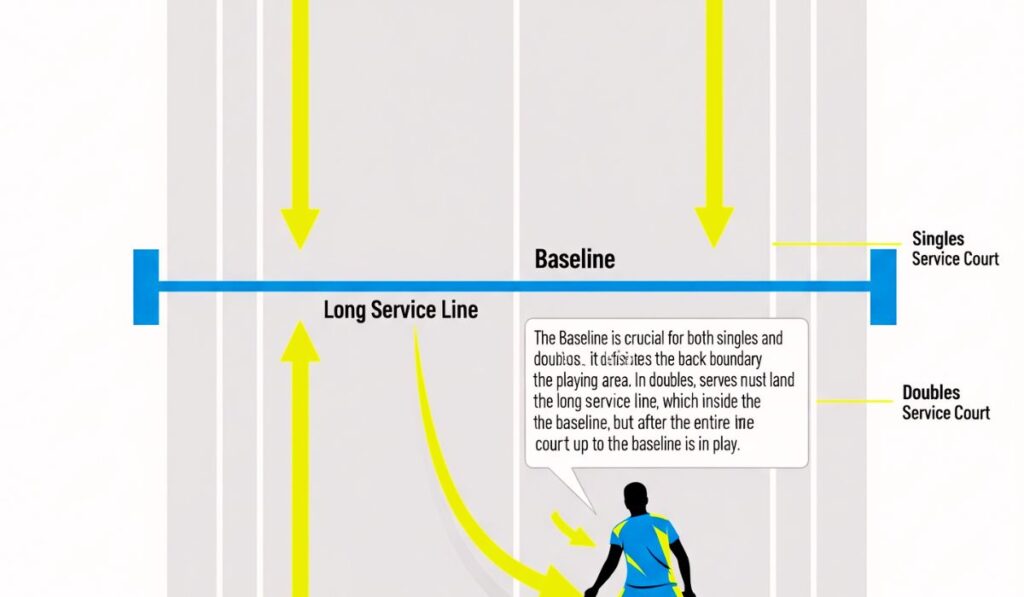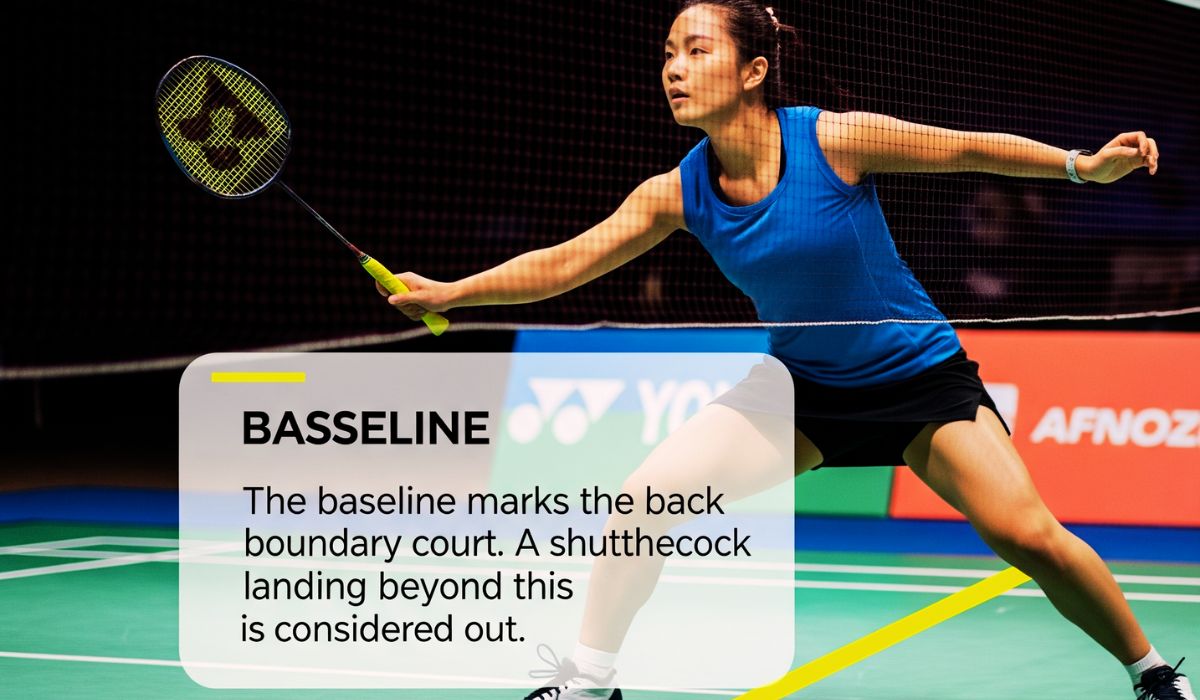Ignored by Beginners, Mastered by Pros: The Underrated Power of the Badminton Baseline
The Hidden Power of the Baseline in Badminton
Most players obsess over their smashes or footwork, but few realize that the baseline in badminton is the silent force that governs the rhythm, range, and reality of every rally. It’s not just a line on the court—it’s the heartbeat of strategic dominance. Whether you’re serving or returning, the baseline can either become your launchpad to victory or the boundary that cages your potential. Overlooking it can mean the difference between confidently controlling your opponent or watching helplessly as the shuttle dips behind you. The moment you start paying attention to this underestimated zone, the entire flow of your game transforms. Suddenly, you’re no longer playing blindly—you’re dictating play from the shadows.
A Boundary That Sets You Free—Or Holds You Back
There’s something oddly poetic about the baseline in badminton. It defines the end, but also the beginning. For every powerful clear, every precision drop, and every defensive lob, the baseline acts as the invisible fence that either protects your space or puts you in peril. Misjudging your distance from it can lead to hesitation, mis-hits, or heartbreaking faults that shake your confidence. But once you master its location and purpose, you find freedom. You feel the sweet tension of the court’s edge, and learn how to use that tightrope space to your advantage. It’s not just a matter of physics; it becomes emotional. The line tests your patience, sharpens your instincts, and dares you to take risks with control.
The Seductive Art of Positioning Near the Baseline
There’s an almost sensual rhythm to moving along the baseline in badminton. Your feet glide, your shoulders brace, and your eyes calculate distance with passion and urgency. The pressure of staying within bounds ignites a special kind of awareness—like walking the edge of a cliff, where every inch matters. This fine-tuned positioning isn’t for show; it’s for survival and dominance. Players who train their bodies and instincts to understand the baseline don’t just return shots—they manipulate space. They force their opponents to lunge, stretch, and break rhythm. A few inches behind the line, and you’re out. But just in front of it, you become a wall, an anchor, an immovable force. The intimacy between your movements and the baseline marks the difference between chaos and control.

Baseline Discipline: The Mark of True Greatness
If you study elite players, one quiet detail always stands out: their unwavering respect for the baseline in badminton. They never cross it thoughtlessly, never lose awareness of its position. Why? Because this single line holds the key to deep clears, long rallies, and psychological pressure. Knowing when to push the shuttle near your opponent’s baseline—or how to defend yours—separates amateurs from champions. Discipline around this area prevents unnecessary faults and allows you to reclaim initiative during high-speed exchanges. When a rally stretches to its 20th shot and your legs tremble with fatigue, baseline mastery keeps you grounded. It whispers guidance, helping you make decisions not just with instinct, but with strategy and composure.
Emotional Warfare Starts at the Baseline
Badminton isn’t just physical—it’s emotional warfare. And the baseline in badminton is your battlefield’s edge. If you let fear creep in—afraid to send the shuttle deep or unsure of your footing—you’ve already surrendered ground. But when you commit to that final inch, to that daring placement just before the line, you communicate something powerful: you are in control. It’s an act of boldness. Of confidence. And your opponent feels it. You don’t need words—just one deep, clean shot brushing the back line can break their spirit. In those moments, the baseline isn’t just a part of the court; it becomes a weapon of psychological domination.
When Precision Meets Pressure – The Psychological Grip of the Baseline
The baseline in badminton is more than just a line etched into the court. It’s a psychological battleground, a mental pressure point where champions are made and matches are lost. Players stepping near the baseline carry the weight of judgment. One wrong move, one overhit smash, and the shuttle spirals out, costing points that cut deeper than a blade. But when a player confidently hovers at the edge, their footwork crisp, their eye like a hawk’s, that baseline becomes a launching pad for dominance. It’s in this emotionally charged zone that composure becomes a weapon, and hesitation becomes a sin. The baseline becomes the silent whisper that says, “Are you sure you’ve got what it takes?”
The Art of Holding the Line – Why Elite Players Master the Baseline First
Ask any seasoned coach or international champion, and they’ll confess one sacred truth: mastery of the baseline in badminton isn’t optional—it’s essential. A player who doesn’t respect this boundary is doomed to dance on the edge of disaster. Elite players aren’t just physically quick; they are emotionally fluid. They can sense the moment to retreat, the instant to strike, all while maintaining a magnetic relationship with the baseline. It’s their sanctuary and their battlefield. Without control over this area, no strategy holds weight, and every tactic collapses like a house of cards under wind.
The Seductive Risk of Playing Deep
There’s an undeniable thrill in playing close to the Baseline in badminton. It tempts the bold and punishes the reckless. That deep court shot, floating like a whisper before it dives like a dagger—it’s intoxicating. The shuttle teasing the edge of the line offers an adrenaline high no drug can match. But this seductive play comes with its own curses. Misjudge by an inch, and the roar of the crowd turns into a gasp of disbelief. It’s a dance with danger that makes badminton breathtaking. And yet, the greatest rallies are born from this very gamble.
Baseline Control and Footwork – A Choreographed Seduction
Your feet are your truth-tellers on the court, and the Baseline in badminton is where they confess their loyalty. A player with refined footwork can flirt with the boundary without overstepping. Every elegant lunge, every balanced return from the backcourt paints a portrait of discipline and seduction. When a player glides toward the rear court, shoulders aligned, eyes locked, and feet whispering across the surface, the baseline becomes more than a line—it becomes an extension of their body. The crowd may only see the shot, but true players know the magic begins in the feet.
The Line of Trust – When You Must Believe in the Baseline
There’s a haunting beauty in trusting your shot near the Baseline in badminton. Some call it instinct. Others call it madness. But in the highest levels of play, players no longer measure with sight alone. They measure with memory, muscle, and mind. They feel the boundary before they see it. A crisp clear to the farthest edge, a dive shot that nestles just inside the chalk—these aren’t guesses. They are declarations of confidence. You trust your baseline like you trust your breath: absolutely.
The Power of Baseline Clears – Sending a Message Without Words
A clear that kisses the Baseline in badminton is not just a defensive move—it’s a psychological message. When your shuttle lands deep and flat near the backline, your opponent receives more than a return—they receive a warning. It says: I own this court. It says: don’t come too close. This isn’t just control; it’s domination painted with shuttle feathers. The baseline in badminton holds that kind of quiet violence. It’s beautiful, it’s brutal, and it’s necessary.
Pain of the Misjudged Leave – When the Line Turns Against You
Few moments in badminton feel more gut-wrenching than letting a shuttle drop near the baseline, only to watch it land in. That sinking feeling, that audible gasp from the crowd—it’s pure agony. You thought you were smart, calculated, tactical. Instead, you’re left staring at the line as if it betrayed you. But here’s the truth: the baseline owes you nothing. It’s your job to know it. To love it. To fear it. And to never, ever underestimate it.
Baseline Drives – Speed Meets Shadow
Baseline in badminton drives are like shadows—silent, fast, and striking when least expected. A well-timed flat drive slicing toward the baseline can turn defense into surprise offense. It’s not just about speed; it’s about timing, angle, and guts. These shots don’t merely reach the line—they own it. They blur it. They challenge your opponent to respond in time or crumble under the weight of that razor-sharp trajectory. It’s one of the most thrilling plays in badminton, and it starts where the court ends.
The Baseline as the Gateway to Rhythm
The rhythm of a rally often flows from the Baseline in badminton. It sets the tempo, dictates the spacing, and creates the emotional cadence of the match. A player controlling the backcourt can lull opponents into patterns, then shatter them with a deceptive drop or cross-court flick. It’s hypnotic. It’s calculated. And like a master conductor guiding a symphony, the one in charge of the baseline dictates the entire musicality of the game. The faster you learn this rhythm, the faster you elevate your play.

Training the Baseline Mindset
Great players are made in practice, but legends are built at the Baseline in badminton. Training to dominate this area isn’t just physical; it’s intensely psychological. Players must visualize success, simulate pressure, and rehearse those deep-court shots until they become instinct. Coaches drill the Baseline in badminton into memory with flick serves, rear clears, and pushback pressure. It’s not just about hitting; it’s about enduring. The baseline is a mental fortress. Only those who truly commit themselves can make it home.
The Romance of the Rear Court
There’s something romantic about the rear court. Maybe it’s the space. Maybe it’s the silence. Maybe it’s the fact that every shot here feels grand, sweeping, cinematic. When a shuttle sails toward the baseline, time seems to stretch. The world holds its breath. Will it land in? Will it drift out? Every millimeter becomes meaningful. The rear court invites you to play big, love hard, and live close to the edge. And that’s what makes it unforgettable.
Baseline in badminton Battles in Doubles – A Test of Trust and Timing
In doubles, the baseline in badminton is even more critical. One mistimed lift or an overcooked clear can lead to a thunderous smash. Players must not only trust themselves but also anticipate their partner’s rhythm. Backcourt rallies become balletic duets, full of precision and passion. The baseline demands synchrony, awareness, and constant communication. In this chaos, harmony is forged, and games are won.
Baseline Mistakes – Lessons Carved in Loss
Errors at the Baseline in badminton often don’t just cost points—they haunt players. These mistakes teach more than success ever could. A shuttle drifting wide reminds you to control your power. A missed clear teaches the pain of poor footwork. These are the lessons players carry in their bones. The baseline is a harsh mentor, but its wisdom is unmatched. Every loss here makes you wiser, tougher, and sharper for the next battle.
Mastering Baseline Angles – Geometry on Fire
Badminton isn’t just athletic—it’s geometric warfare. Players who understand angles and trajectory near the baseline gain lethal control. Sharp diagonals, deceptive arcs, and tight cross-court clears transform defense into art. The player who can manipulate space at the backcourt doesn’t just survive—they dominate. It’s about learning to stretch the opponent, pull them apart with pinpoint placement, and always find that sweet spot where geometry meets genius.
Why the Baseline Matters More Than Ever in Modern Badminton
As badminton evolves with faster rallies and more explosive players, the Baseline in badminton has become more than a zone—it’s a crucible. Modern champions are forged in those high-speed, high-pressure exchanges near the back boundary. With new shuttle materials and rackets hitting harder than ever, controlling this space means surviving the storm. And not just surviving—thriving. The baseline is where today’s players separate themselves from yesterday’s. It is the arena of the future.


2 thoughts on “Baseline in badminton”